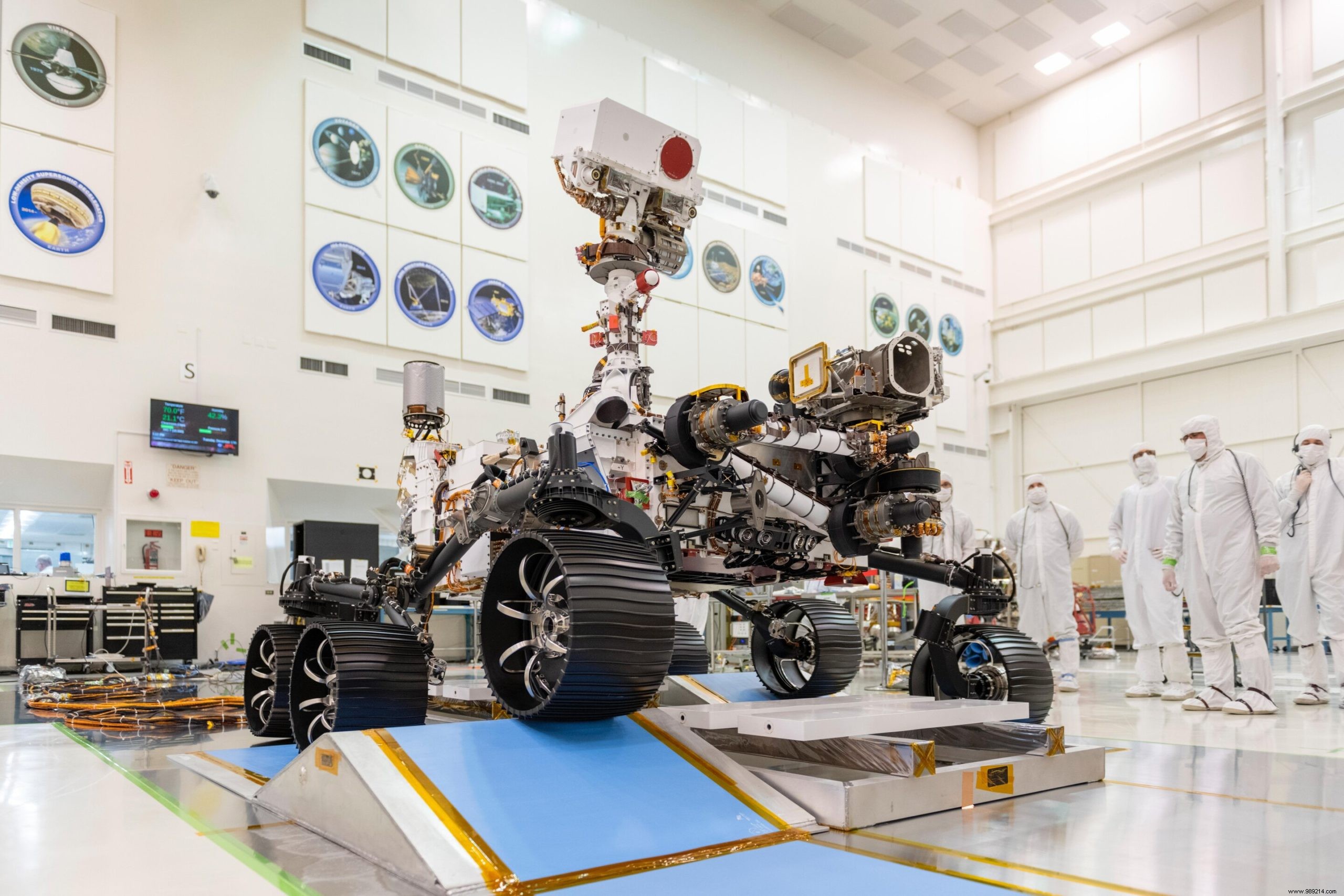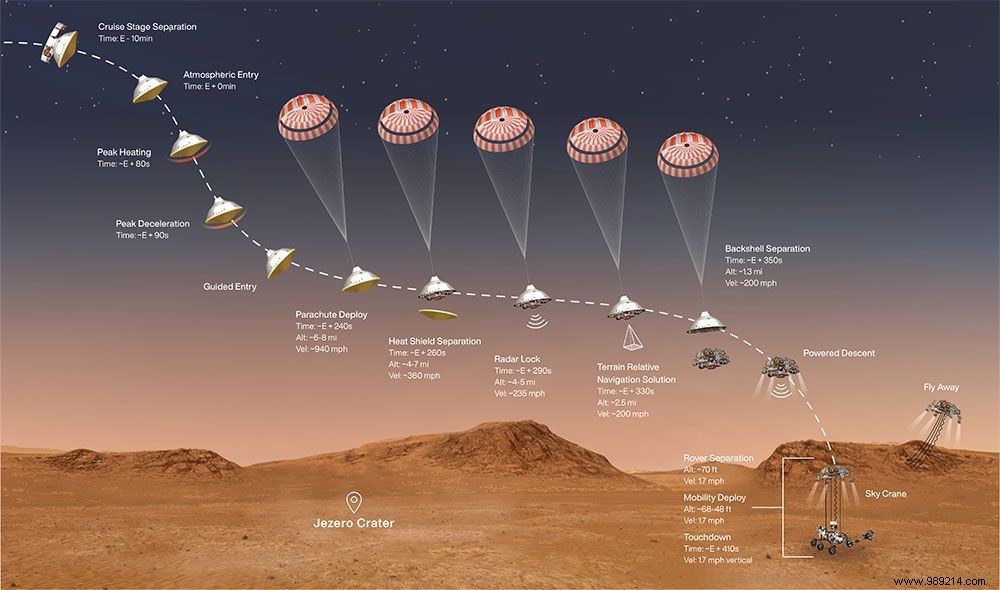Perseverance's long journey to Mars is almost over. Launched on July 30, 2020, the rover is expected to land inside Jezero Crater on February 18, as planned. Here's everything you need to know to follow this exceptional event.
Since its launch, the American rover Perseverance crosses space with the red planet targeted. If all goes as planned, on February 18, the vehicle the size of a small car (the heaviest and most sophisticated ever sent to Mars ) will complete its six-month journey with a hopefully soft landing.
Setting wheels on Mars is indeed a very complicated undertaking. For information, only 40% of missions have landed successfully since the 1960s . Some landers flew past Mars, missing the planet entirely, while others crashed on the surface. For Perseverance, we will therefore have to cross our fingers.
If successful, it will be NASA's fifth rover to land on Mars, following Sojourner (1997), twin rovers Spirit and Opportunity (2004) and Curiosity (2012) .
Once operational, Perseverance will notably probe the presence of traces of past life in the Jezero crater, a forty-five-kilometer-wide basin thought to have hosted a river delta 3 years ago. 3.5 billion years old, positioned at the mouth of a large lake. If there are indeed traces of life on Mars, then they may be there, hidden under a few centimeters of rock.
For those interested, NASA will be covering the event live on its website beginning at 2:15 p.m. Eastern Time (8:15 p.m. French time). A live stream will also be available from 8 p.m. on the excellent Astro Alex YouTube channel – the Espace &Aéro Channel for French speakers.
For this edition, don't expect celebratory hugs, like after Curiosity landed in 2012. This year's event will indeed be more "moderate" due to of the pandemic. Jet Propulsion Laboratory (JPL) crew members in Pasadena, California will be masked and limited to essential personnel to prevent the spread of the virus .
For the thousands of scientists who have helped Perseverance get to this point, nerves will understandably be on edge. "It's a bit surreal “, says Swati Mohan, Mars 2020 Guidance, Navigation and Control Operations Manager. “The team did everything they could before landing. Now we just have to trust our team and the hard work we've done so far to get us to the finish line “.

After six months of travel, the actual process of entering, descending and landing will take just seven minutes . This will be the riskiest seven minutes of the mission. To make matters worse, operators will also be "blind". Given the distance between Mars and Earth, radio signals from Perseverance will indeed take eleven minutes and twenty-two seconds to reach mission control.
So by the time the operators register the signal that the rover has indeed reached the top of the Martian atmosphere, Perseverance will have already landed (or crashed). There will be no buttons to press, no joystick available. The rover will have to land completely autonomously .
The first major milestone for this event will occur around 3:38 p.m. EST (9:38 p.m. French time). At that precise moment, the rover's capsule will detach from the probe. Ten minutes later, the capsule should pierce the atmosphere of Mars, hurtling at nearly 20,000 km/h. To start slowing down, the vehicle will have to perform a maneuver similar to that of airplanes, when pilots wait for the green light to land at an airport. A parachute will then open to further slow down the capsule.
Finally, as it approaches the surface, the descent stage (with Perverance in its belly) will detach from the parachute. At 21 meters above the ground, the rover will then be lowered after three cables. As soon as the system controlling the descent detects that the traction forces exerted on the cables have weakened as a result of the effective removal of Perseverance, the descent stage will deviate and crash at approximately 150 meters.
